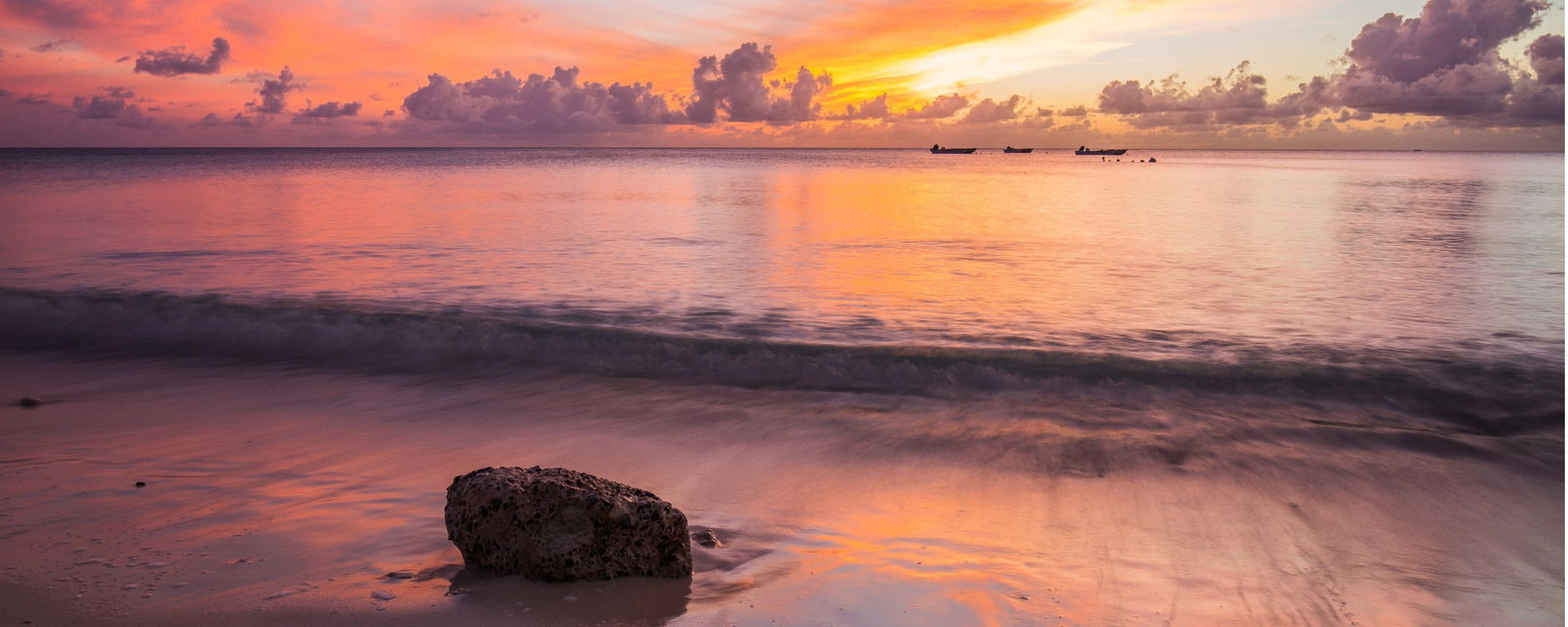


The capital city of Turks and Caicos might be small, but it makes up in natural beauty and colonial charm. Scuba divers come from around the world to explore a 7,000-foot sea wall, often labelled the “Grand Canyon of the Caribbean.” Take a stroll down the oceanfront Duke Street and Queen Street in Cockburn Town to view historic buildings showcasing British and Bermudian architecture of the colonial days; many are now boutique inns and villas. With miles of unspoiled shoreline and quaint beach shacks, this is the place for ultimate relaxation.
Admire the colonial architecture of the town as you tour the interesting landmarks that give Grand Turk its cultural and historic feel. From Her Majesty's Prison, the National Museum, and the Grand Turk Lighthouse, you can spend an afternoon learning about the country’s past.
Aficionados of the sport can enjoy fishing in the shallow reefs abundant to deep sea boat charters. The 6,000-foot-deep Turks Island Passage, which separates Grand Turk and Salt Cay from the Caicos Islands group, offers an incredible variety of catch like marlin and sailfish.
Gibbs Cay, a seven-acre island with shallow, crystal clear waters, is fondly known as Stingray City due to the large number of stingrays which appear when boats stop in. You can snorkel right next to the friendly rays, who are accustomed to humans.
You can spend an entire day snorkeling, swimming, or simply sunbathing on the pristine beaches of Grand Turk, all of which are free to visit. Grab some drinks and snacks at the small supermarkets which pepper the town and have a picnic in the sand.
In the early 1700s, British colonials in Bermuda set to develop Grand Turk as a salt producer thanks to its shallow ponds. However, the industry declined due to small scale production. Remnants of the salt industry can still be seen on the island.

Grand Turk's winter, from December to February, offers warm and pleasant weather with temperatures ranging from the mid-70s to low 80s Fahrenheit. It's an ideal time to visit this idyllic island in the Turks and Caicos as it allows for enjoyable beach days and water activities. Winter is perfect for snorkeling or diving in the clear waters to explore the coral reefs and spot colorful marine life.

Spring in Grand Turk, from March to May, brings slightly warmer temperatures with highs in the low to mid-80s Fahrenheit. The island's landscapes remain lush and green from the previous rainy season. Spring is ideal for relaxing on the pristine beaches like Governor's Beach and Pillory Beach, known for their tranquility and stunning turquoise waters. Visitors can also visit the Grand Turk Lighthouse for breathtaking views of the coastline.

Grand Turk's summer, from June to August, marks the beginning of the rainy season. While it can be hot and humid with temperatures in the mid-80s to low 90s Fahrenheit, it also provides a refreshing respite from the dry season. Summer offers opportunities for experiencing local culture and attending events like the Grand Turk Carnival, a lively celebration with colorful parades and music. Visitors can also take boat tours to explore the surrounding cays and go whale-watching.

Fall in Grand Turk, from September to November, is the peak of the hurricane season. The weather remains warm and humid, with temperatures ranging from the mid-70s to low 80s Fahrenheit. Despite the risk of storms, fall is an excellent time to experience the island's laid-back atmosphere and enjoy the lower tourist crowds. Visitors can explore historical landmarks like the Grand Turk Museum and the Turks and Caicos National Museum to learn about the island's history and culture. Fall is also an ideal time to indulge in fresh seafood at local restaurants and take advantage of off-season discounts in accommodations.